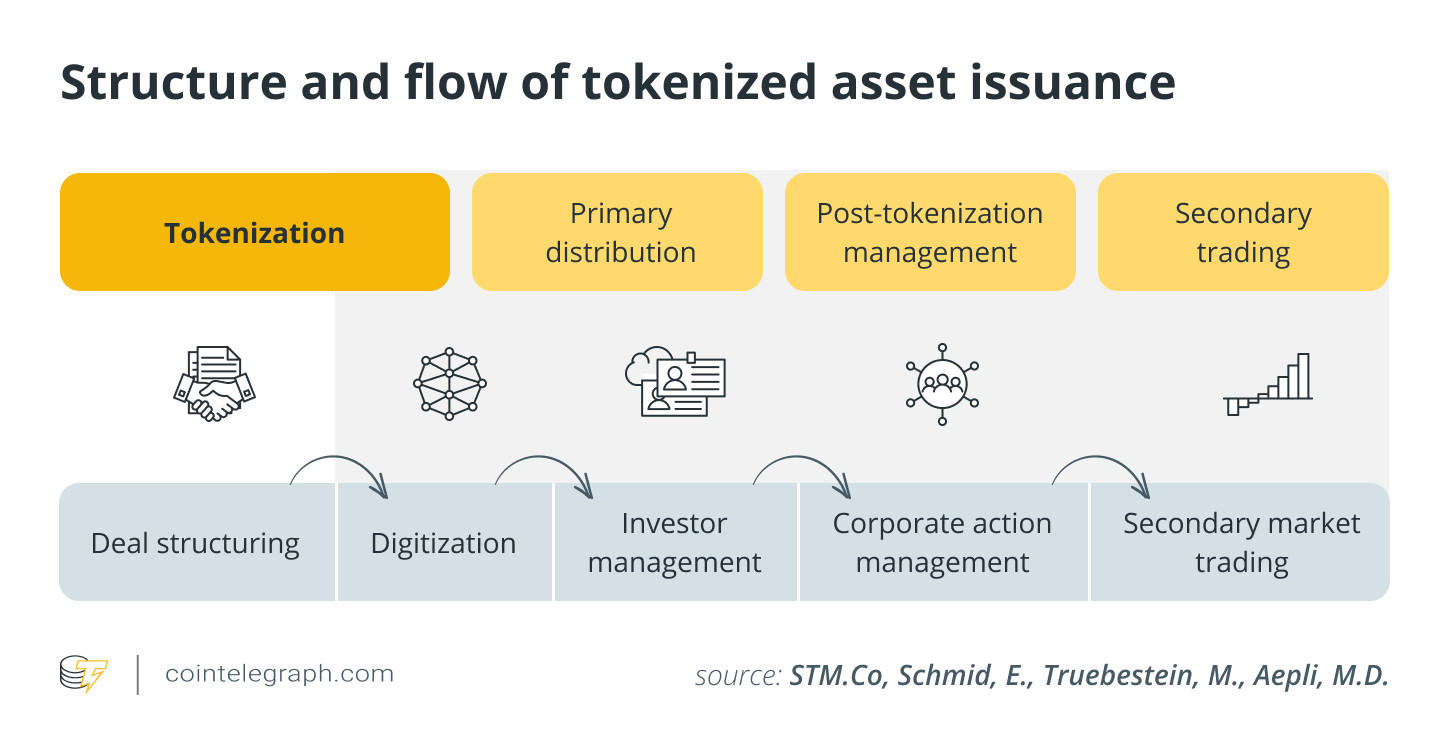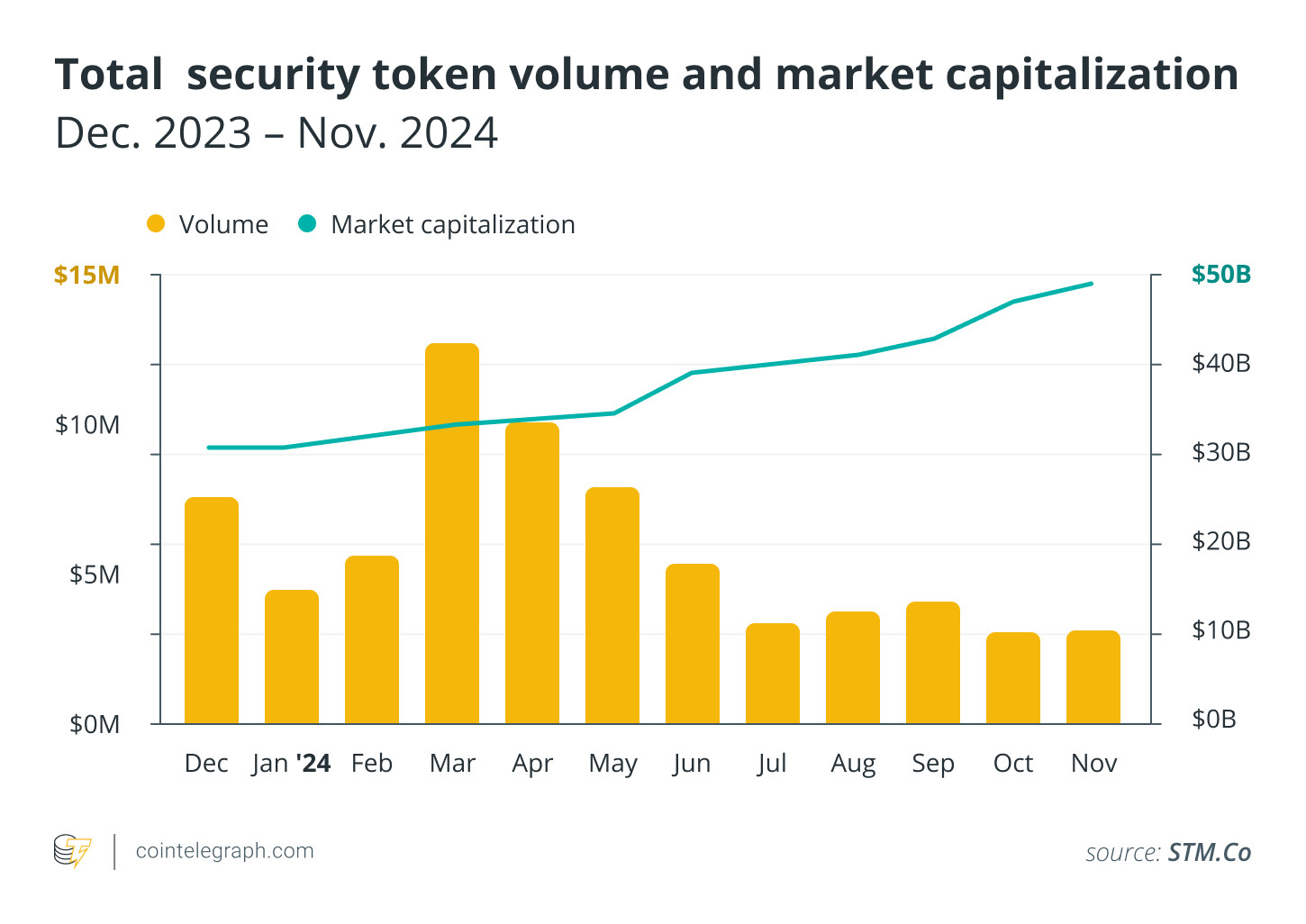The Future of Finance: How Tokenization is Transforming Traditional Assets

Imagine a world where investing in real estate, corporate bonds, or even fine art is as simple as buying stocks on your favorite app. This isn’t science fiction—it’s the power of tokenization, and it’s revolutionizing asset ownership as we know it. By converting real-world assets into digital tokens on a blockchain, tokenization is making previously exclusive markets more accessible, efficient, and transparent.
A recent in-depth report by Brickken and Cointelegraph Research delves into how institutional investors are jumping on this trend, reshaping the financial landscape for good.
Download the full report here
A Deep Dive into Tokenized Asset Issuance
Tokenizing assets isn’t just about turning physical ownership into digital files—it’s an intricate process designed to enhance security, efficiency, and liquidity. Let’s break it down step by step:
1. Structuring the Asset
Before anything can be tokenized, a clear legal framework must be established. Whether it’s real estate, a bond, or a stake in a private equity fund, assets are typically held by a Special Purpose Vehicle (SPV)—a dedicated legal entity ensuring investor protections.
2. Going On-Chain
Once legally structured, the asset undergoes digitization, recorded on a blockchain. Smart contracts automate compliance checks, dividend payouts, and governance mechanisms—eliminating costly intermediaries and improving efficiency.
3. Issuing the Tokens
During the primary distribution phase, investors go through standard Know Your Customer (KYC) procedures before acquiring digital tokens that represent fractional ownership of an asset. This process mirrors traditional Initial Public Offerings (IPOs) but is faster, transparent, and more accessible.
4. Ongoing Management & Trading
Post-tokenization, ownership and transactions are seamlessly automated via smart contracts. Investors can trade their tokenized assets on secondary markets—exchanging holdings as easily as they would stocks or cryptocurrencies. No more waiting years to liquidate real estate or debt instruments; with tokenization, assets are as tradeable as digital currencies.
 Tokenized asset issuance structure
Tokenized asset issuance structure
Tokenization is Reshaping Entire Asset Classes
From real estate to debt financing, tokenization is making markets more transparent and accessible for retail and institutional investors alike.
Bringing Liquidity to Debt Markets
Corporate bonds and loans were traditionally illiquid, requiring lengthy processes to trade. Tokenization is changing that, with major institutions like the European Investment Bank already issuing €100 million in digital bonds on the Ethereum blockchain.
The Evolution of Fund Management
Financial giants such as Franklin Templeton are leading the charge in tokenizing investment funds. Their OnChain US Government Money Fund operates on blockchain, streamlining ownership tracking and transaction processing.
According to Security Token Market, over $50 billion in assets were tokenized by the end of 2024, with $30 billion coming from real estate alone. And this is just the beginning.
 Security token volume
Security token volume
The Road Ahead: What’s Next for Tokenization?
Tokenization is no longer an experimental concept—it’s an established, disruptive force reshaping finance. Its benefits—enhanced liquidity, reduced administrative overhead, and wider access—are making it too compelling for institutions to ignore.
As we step into 2025, expect to see even greater adoption across asset classes. Integration with DeFi platforms, enhanced regulatory clarity, and innovations in tokenized instruments will push the industry further into the mainstream.
For retail and institutional investors alike, the tokenization wave is just getting started.
Download the full research report by Brickken and Cointelegraph here
Disclaimer
This article is for informational purposes only and does not constitute investment advice. All investments carry risk, and readers should conduct thorough research before making financial decisions. The views expressed in this article are those of the author and do not necessarily represent the views of Cointelegraph or Brickken.

